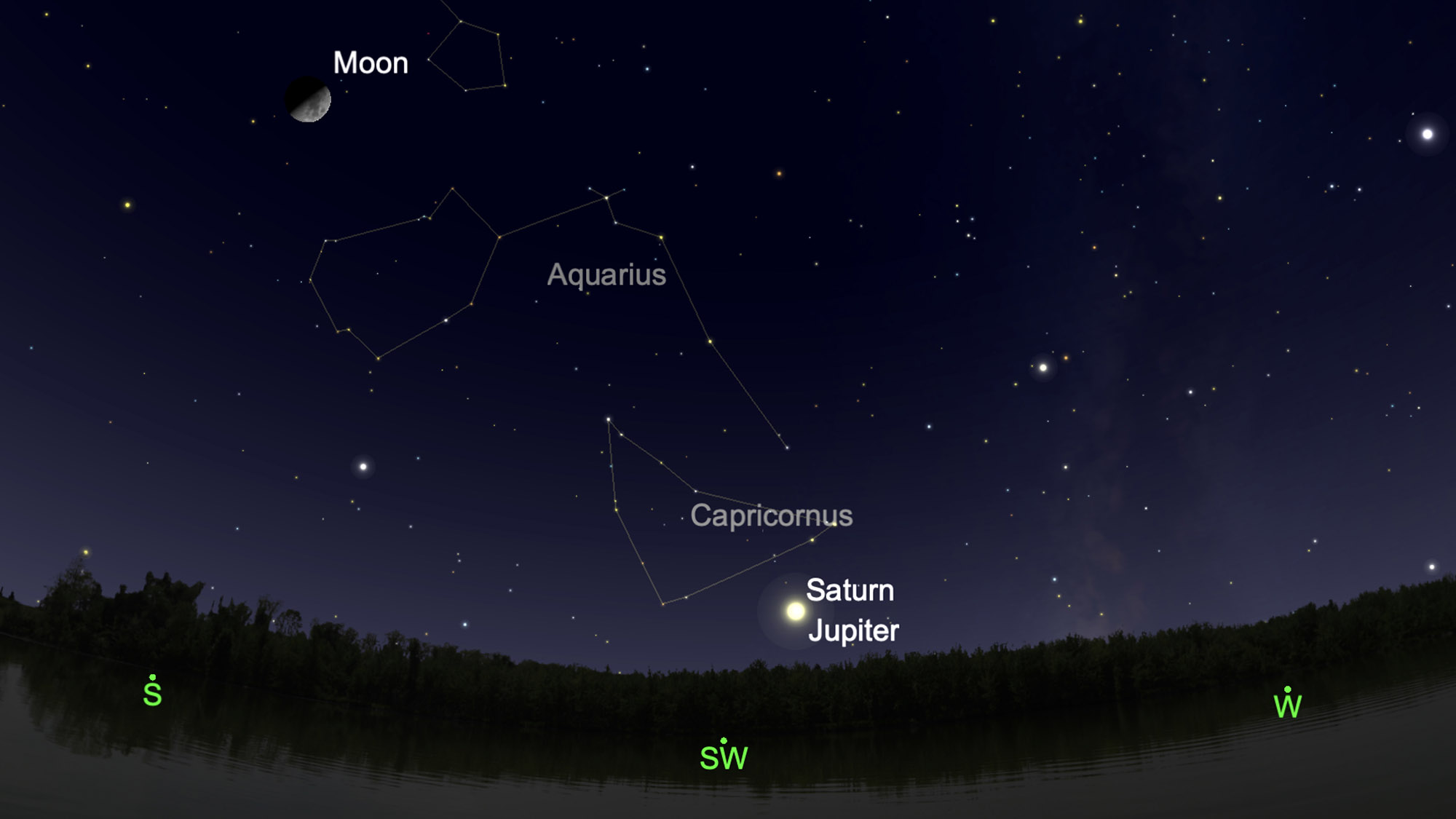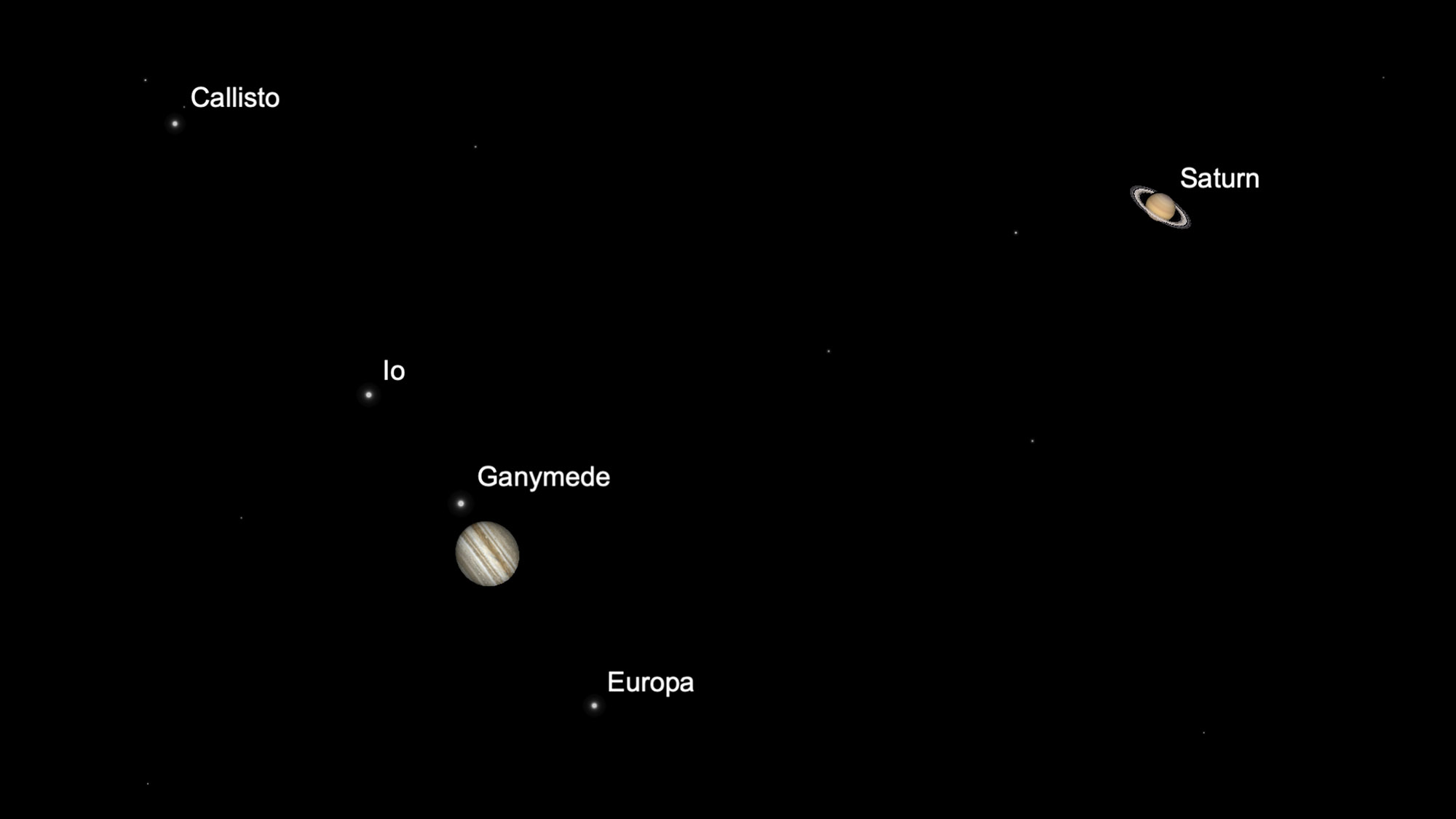Get ready for the 'Great Conjunction' of Jupiter and Saturn

All through the summer and into the fall, the two gas giants of the solar system, Jupiter and Saturn, have been calling attention to themselves in the southern evening sky.
Jupiter of course, always appears brilliant and is usually one of the brightest nighttime objects, but in recent months it has stood out even more than usual because of the presence of bright Saturn trailing just off to its left (east).
Appearing about one-twelfth as bright, Saturn has, in a way, served as Jupiter's "lieutenant" in this year of 2020.
Related: This is what Jupiter and Saturn look like from Mars
An infrequent meeting
Whenever Jupiter and Saturn are in conjunction — that is, when they have the same right ascension or celestial longitude — it is referred to as a "Great Conjunction," primarily because unlike conjunctions with the other bright planets, these two don't get together very often. The average frequency of occurrence is merely the product of their sidereal periods divided by the absolute value of their difference.
A sidereal period is defined as the time required for a celestial body within the solar system to complete one revolution with respect to the fixed stars. Saturn's period of 29.65 years multiplied by Jupiter's period of 11.86 years amounts to 351.65. Dividing this value by the difference in their sidereal periods gives us 19.76 years.
So, about every 20 years, Jupiter and Saturn will have a rendezvous. The next one is coming very soon; scheduled for Dec. 21.
Breaking space news, the latest updates on rocket launches, skywatching events and more!
Exceptionally close!

Most of the time, when Jupiter overtakes Saturn, they usually are separated by more than a degree. But come Dec. 21, they will be separated by just about one-tenth of a degree or 6.1 arc minutes. To gauge how close that is, on the next clear night, check out Mizar, the middle star in the handle of the Big Dipper. A fainter star, Alcor, is positioned only 11.8 arc minutes away and the ability to perceive the separation of these two stars, was once considered a test of good vision.
And yet Jupiter and Saturn will approach to within about half that distance!
That's just 0.102 degrees
This means, under high magnification in your telescope you'll be able to see both planets — Saturn with its famous ring system and Jupiter with its cloud bands and Galilean satellites — simultaneously in the same field of view!
How great is that?
It will be interesting to watch how the gap between these two planets will gradually close during November and December. On Nov. 1st, they are 5.1 degrees apart; by Nov. 15, 3.8 degrees. By Dec. 1, they'll be separated by 2.2 degrees and by Dec. 15 it will be down to just 0.7 degrees, then 0.1 degrees closer each night thereafter until their long-awaited meeting on Dec. 21.

A coalescence?
As to whether the two planets might appear as a single star, I personally can recall on June 5, 1978 when Mars and Saturn were separated by a similar distance, and yet I could clearly separate both planets with my naked eye. However, those who are near-sighted might see Jupiter and Saturn appear as one merely by removing their eyeglasses.
The last time these two planets appeared so close was on July 16, 1623, when they were only 5 arc minutes apart. We will get another 6-arc minute separation on March 15, 2080. Maybe a few of our younger readers will be around to catch that one.
Joe Rao serves as an instructor and guest lecturer at New York's Hayden Planetarium. He writes about astronomy for Natural History magazine, the Farmers' Almanac and other publications. Follow us on Twitter @Spacedotcom and on Facebook.

Joe Rao is Space.com's skywatching columnist, as well as a veteran meteorologist and eclipse chaser who also serves as an instructor and guest lecturer at New York's Hayden Planetarium. He writes about astronomy for Natural History magazine, Sky & Telescope and other publications. Joe is an 8-time Emmy-nominated meteorologist who served the Putnam Valley region of New York for over 21 years. You can find him on Twitter and YouTube tracking lunar and solar eclipses, meteor showers and more. To find out Joe's latest project, visit him on Twitter.
